
Building an early 1930s-style 2 tube Regenerative Receiver
I had been acquiring parts for building this version of a 1930s ARRL Handbook Regenerative receiver for some time. The circuit is in the 1937 and 1938 Handbooks. Since it uses tubes that are 5 and 6 pins, (pre-octal) I'm assuming the original circuit is probably a 1933 or 34 design. The little power supply shown with the regen is a Heathkit EF-1.

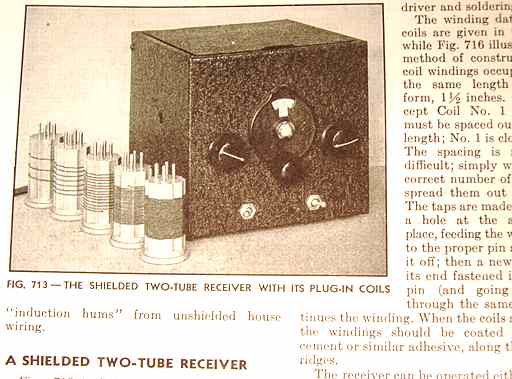
Cutting the chassis.
The aluminum chassis was new old stock. Tools for cutting the chassis holes (all made by Greenlee) included a chassis punch, stepdrill bit, and 1-1/8 inch hole saw designed for metal cutting.
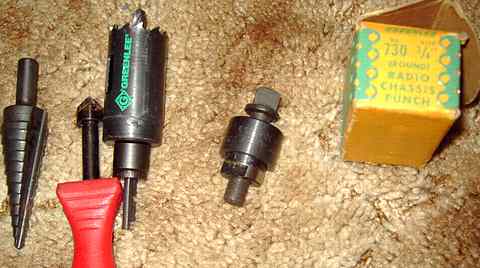
The cabinet with front panel was recycled. I had to work with or around the original holes in the front panel. Note the raised socket for the plug-in coils. The intent is to keep the coil raised away from chassis metal.
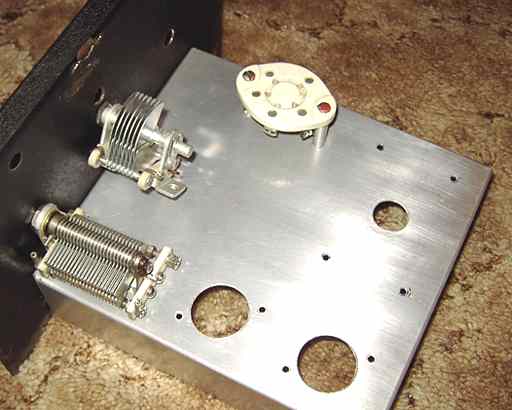
Modifications
My cabinet and National dial are similar but a bit larger than the ones shown in the Handbook. The handbook schematic uses hot headphone connections (B+ on the phone jack or tips). I found a 1 to 1 ratio tube interstage transformer in the "box de junque" and installed it under the chassis for safety. The 1 to 1 ratio keeps the impedance at the proper level for the 2000 ohm vintage headphones and B+ voltage off the headphones.
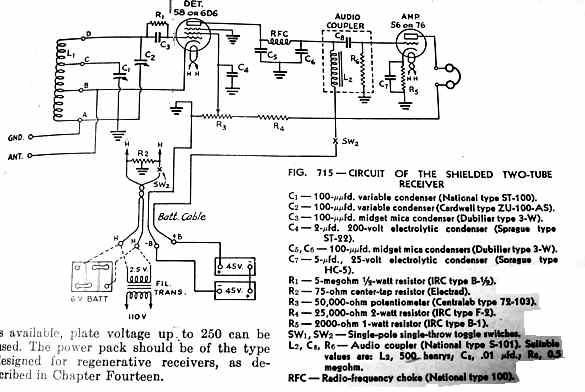
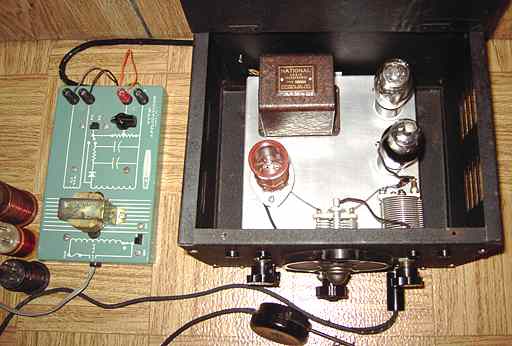
All other components are vintage used or new old stock. The tubes are a 6D6 pentode and a 76 triode as shown in the schematic for a 6 volt filament supply. I used old-style black fabric-insulated solid wire for most connections. The color-coded four-wire power umbilical goes to a barrier terminal strip at the back of the chassis.
Performance.
I have always been amazed by the performance of simple regenerative receivers and was not disappointed by this one. The stability was surprising. On the first night of operation, I listened to local AM broadcast stations with a short piece of wire for antenna. With an 80 meter dipole antenna connected, I listened to code practice on 160 meters and several SSB conversations on 80 meters. SSB tuning took some skill but once tuned, the long term frequency stability was surprising. The added antenna trimmer variable cap tweaked the frequency just slightly which was handy for final adjustment of SSB. The designers of this circuit probably never dreamed it could be used for tuning in a single sideband.
Low voltage operation
Another surprise with this set and probably all similar regen sets was that satisfactory operation is possible with low voltage. This set is happy with 12 to 30 volts of B+. In fact, I preferred the lower voltage when tuning SSB since the regen control can be used to aid in final tuning of SSB signals. The range of the regeneration control is extended with such low voltage which allows for smoother transition from the initial point of regeneration, which sounds like a "fup" or huffing sound in the headphones, to the point of optimal regeneration for listening to SSB or CW.
Read more on experiments with low voltage operation on a 1950's homebrew regenerative set .
Connecting a cheap powered-speaker
Although the 1930's set is designed for high-impedance headphones, I purchased a powered computer speaker at a second-hand store for $2 that works quite well when plugged into the headphone jack for speaker volume.
2-30-06
An Acoustic Research AR-2ax speaker pair was the previous item on the bench.